Gallery: Amazing Images Reveal Beauty in Science
East-West
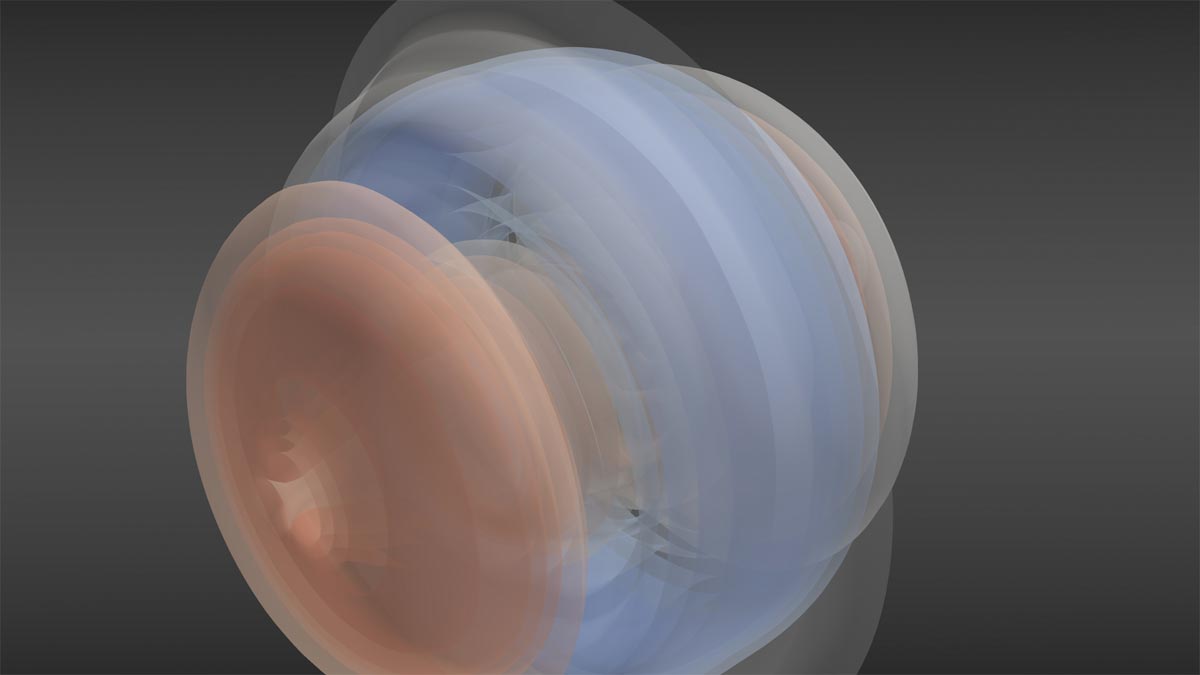
The winds around our globe are preferentially directed from West to East, or East to West, and much less so in the North-South directions. As a result, atmospheric phenomena can travel around the globe, exchanging information even from remote places of the Earth easily. We see in the picture surfaces of constant wind around Earth, averaged over time. Blue is East-to-West, red West-to-East directed wind.
Crushed birch
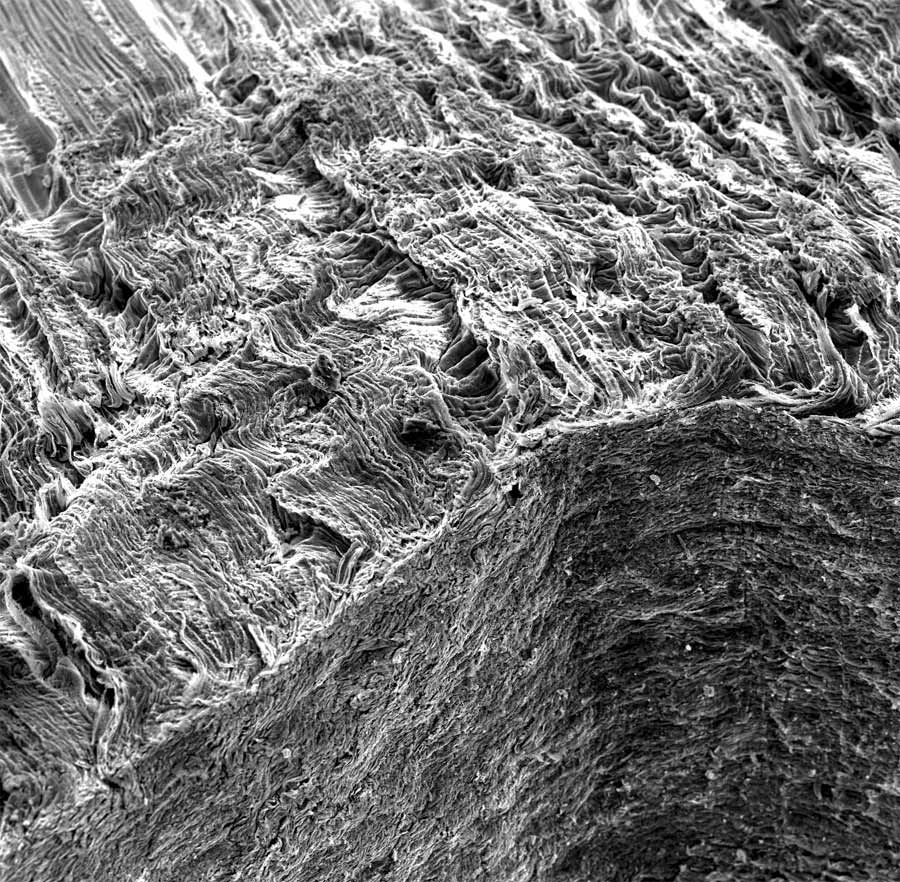
"The dense cellular structure of wood is what protects it, in part, from microbes breaking apart cellulose and causing rot. In my materials science course we broke apart the cellular structure of birch by resorting to mechanical strength, crushing it along a specific direction and buckling the cellulose pathways that would normally be responsible for the distribution of water and nutrients to the rest of the tree," according to Michael Kosk of Princeton's Woodrow Wilson School, who received Jury Second Place.
Web of art and science
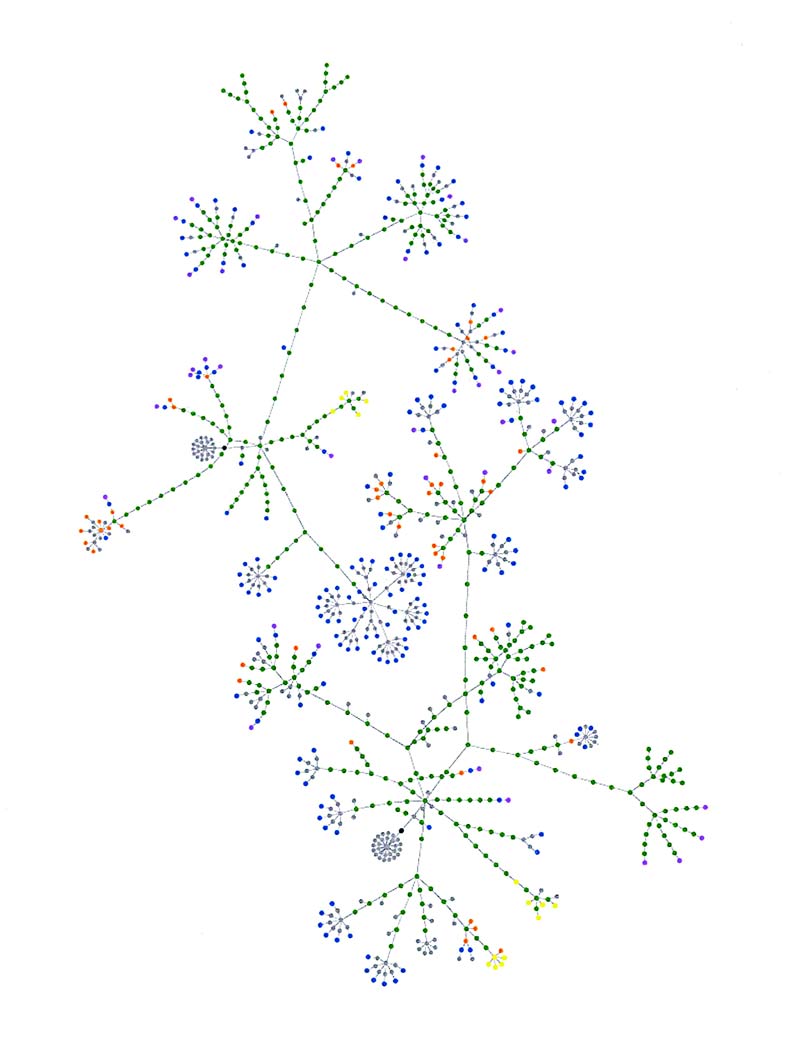
"These two embroidery-like figures visually give us an idea of the similarities and differences of a website devoted to science and one devoted to the arts. The Princeton Plasma Physics Lab site is represented at top left. Lewis Center for the Arts site is at lower right," say Princeton's Paul Csogi and Chris Cane, who received Jury Third Place.
(blue: for links, green: for the DIV tag, violet: for images, yellow: for forms, orange: for linebreaks and blockquotes, black: the HTML tag, the root node, gray: all other tags)
Messenger meshwork
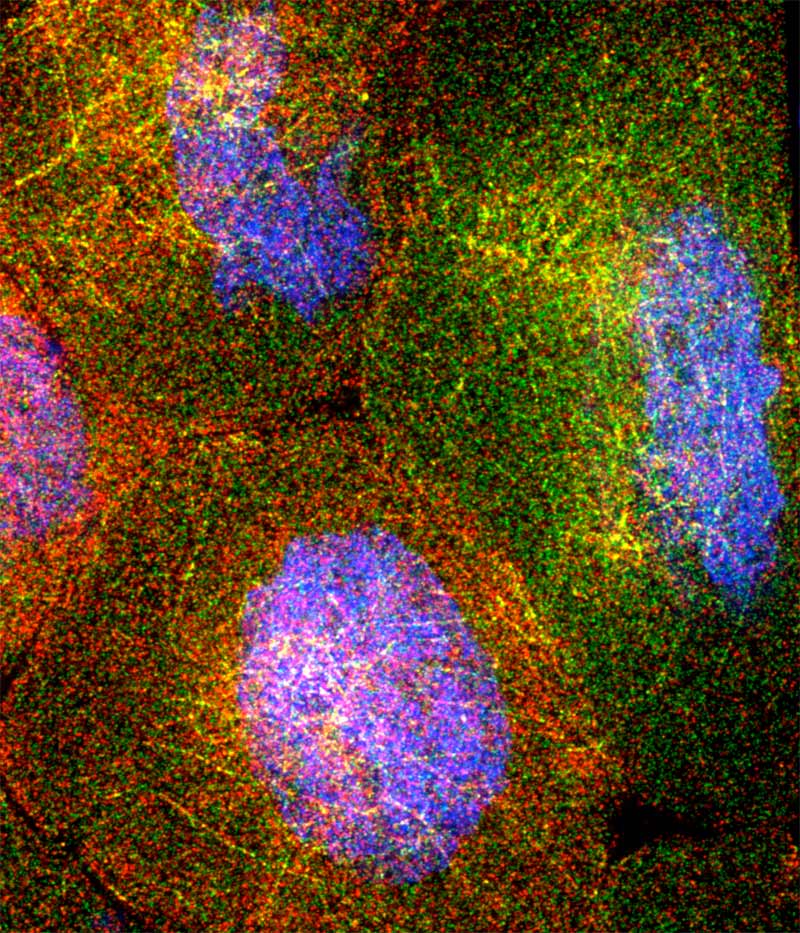
Here, the nurse cells inside the egg chambers of a fruit fly ovary. The green and red dots represent molecules of RNA, which are produced by DNA (blue). The RNA molecules move along a threadlike network from one nurse cell to another. (People's First Place)
Bridging the gap
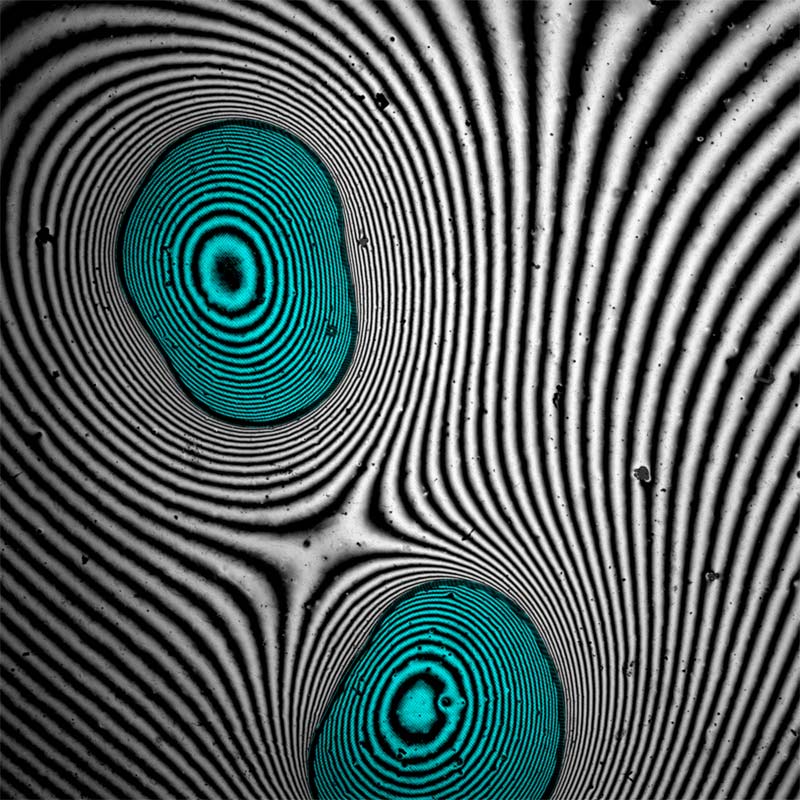
Liquid drops are trapped in a thin gap between two solids (transparent here), creating a strong negative pressure inside the drops. This pressure can deform flexible solids to close that gap. Here, the dark and light lines are lines of constant gap height. The blue areas denote the extent of the drops. Since the drops pull the gap closed, the areas of minimum gap height (maximum deformation) are inside the drops, at the center of the concentric rings. (People's Second Place)
Medusa
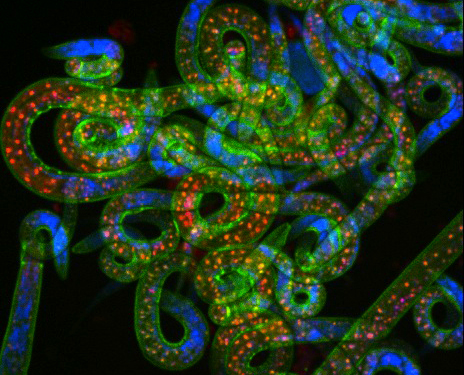
This bright clump of fluorescent stained C. elegans worms resembles the wild snakes that surrounded the head of the mythological sea monster Medusa. But unlike Medusa's snakes, these worms got sticky and connected during an experiment designed to understand how molecules determine cell and organism size. (DNA stained in blue and ribosomal RNA stained in red). (People's Third Place)
The history of gliding
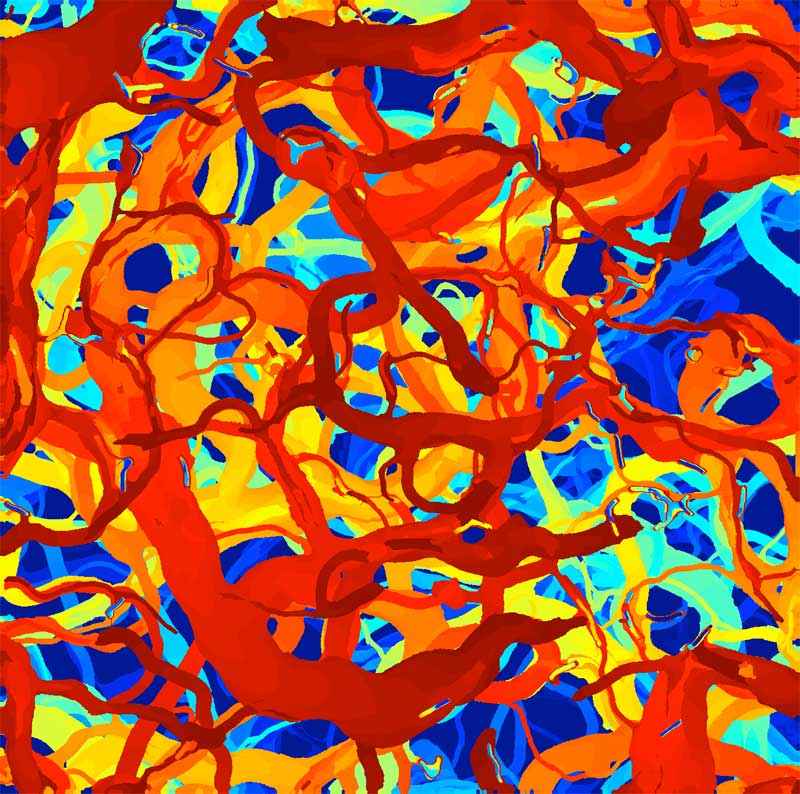
Researchers tracked the gliding of hundreds of thousands cells of the social bacterium Myxococcus xanthus over four hours. Their paths transition from blue to red according to the amount of time elapsed, with blue as the start time and red as the end time.
Get the world’s most fascinating discoveries delivered straight to your inbox.
Exposed
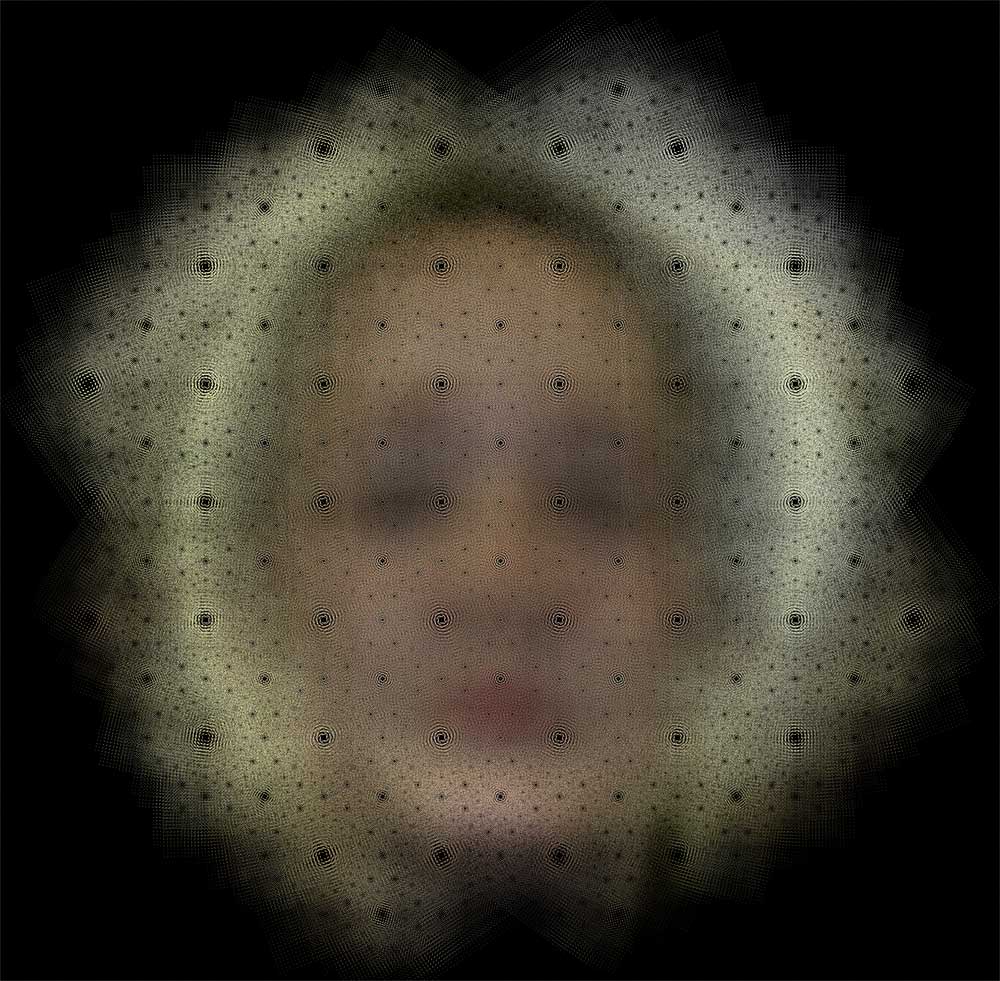
"This work shows a reconstruction of a face from an anonymized video. Given a video stream containing a blurred, unrecognized face, the data from the individual video frames is combined to create a good approximation of the original face. The connection between frames and mutual information is what makes the reconstruction possible. The result is an intriguing 'ghost image' of the subject," said Ohad Fried of Princeton's Department of Computer Science.
Fluid flowers
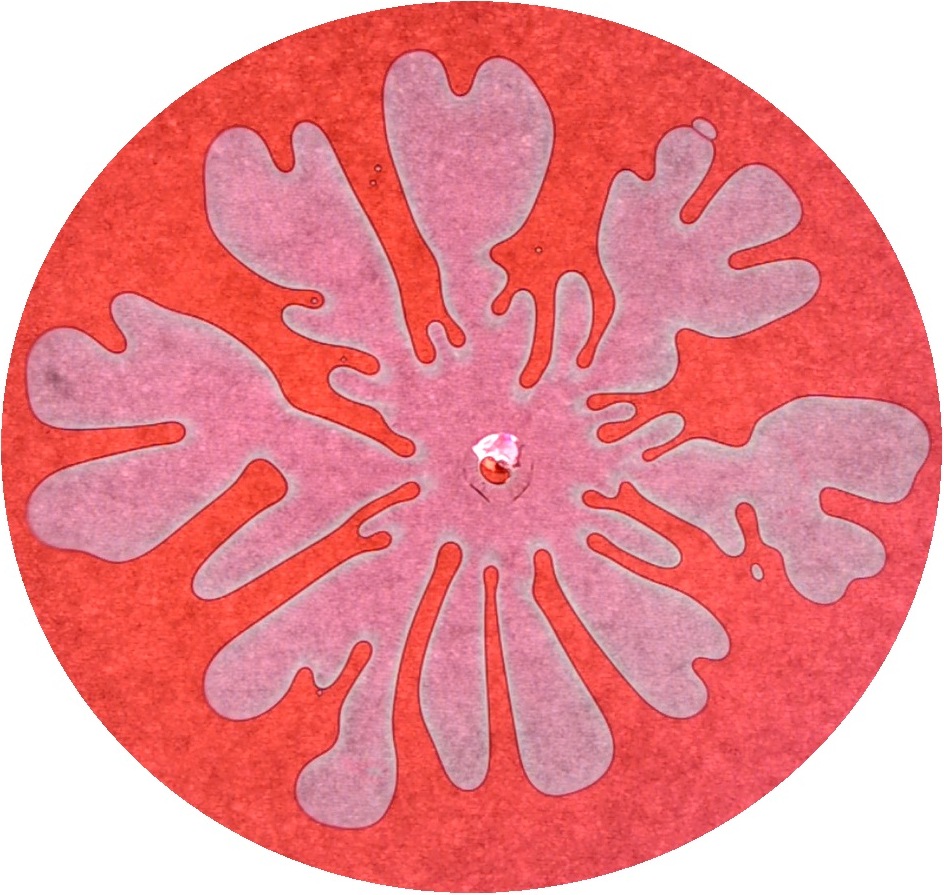
This vibrant pattern is the result of air being injected into glycerine, a viscous substance. The mismatch in viscosity between the two fluids causes the sudden growth and splitting of air passages, which branch into what appears as the petals of an exotic flower.
Goby Fish and Coral
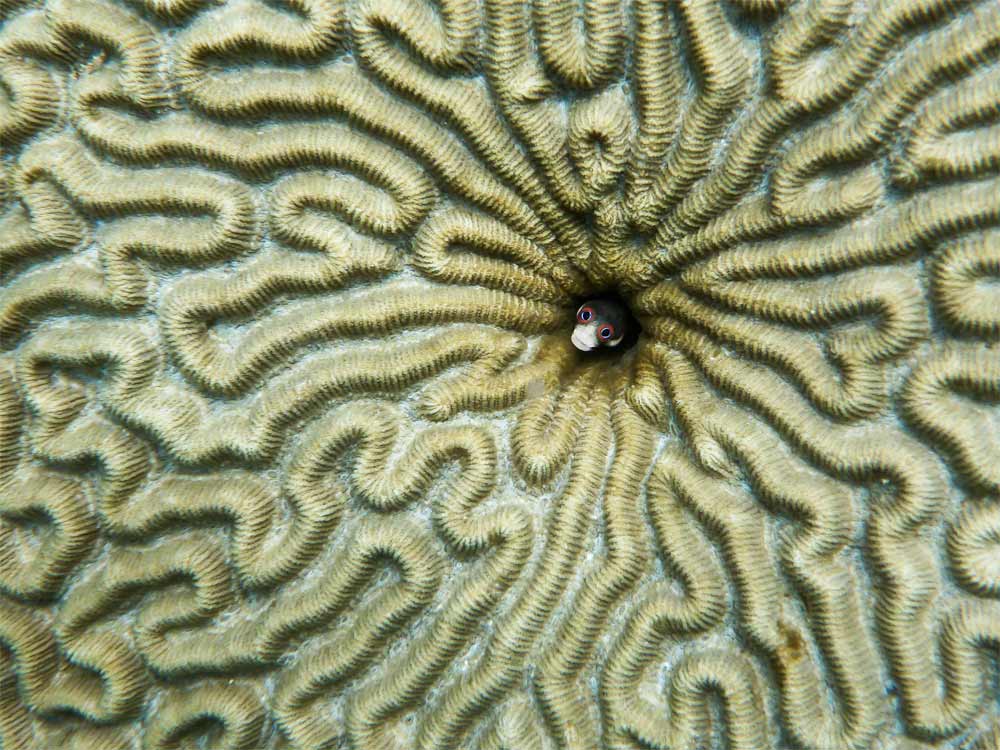
The monkeylike face of a goby fish peers out from the center of a coral labyrinth. The fish depends on the coral for its home, and, in turn, often cleans smothering algae from the coral. This image was accepted into the Art of Science 2013 competition at Princeton University.



